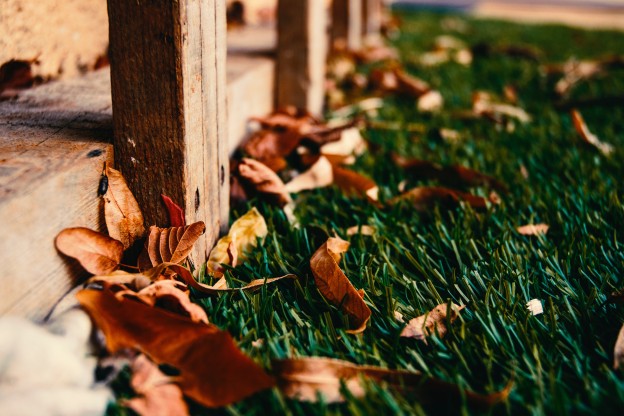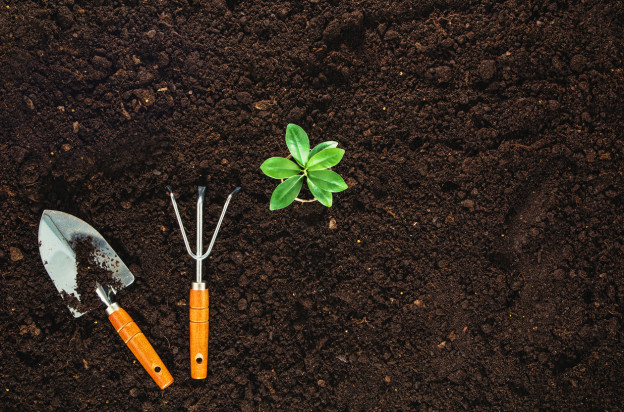Even though the temperatures are dropping outside and the air is feeling ever crisper, the autumn is the perfect time to get most of your gardening done.
By putting in the work in your autumn garden now, you can enjoy homegrown veggies and a bloom of colour all year around. If you’re lucky, you might even get an extra early crop of your spring favourites.
It’s such a wonderful time to plant vegetables, flowers and trees as the soil is still deliciously warm and moist from the summer. This provides the perfect environment for seeds to germinate, for roots to form and for flavour to develop.
To help you make the most of this time, we’ve put together a list of our top autumn gardening tips. We’ve included a rundown of the vegetables and flowers you should include plus full tips on when to get them in the ground.
What to grow in the autumn: Vegetables
Onions
Onions are a tasty and versatile crop which are easy to grow and need little care. This makes them an excellent vegetable to plant this autumn.
When?
Anytime during the autumn.
Garlic
Just pop individual cloves in the ground this autumn or into raised beds and you’ll get a full head of garlic the following year. Easy!
When?
November is the ideal time, although you can plant any time until the spring.
Spring onions
Pop spring onions into your autumn garden to get ahead for next year. They’ll grow quickly and should be bursting with flavour and ready to pick by early spring.
When?
During September and October.
Perpetual Spinach
Grow perpetual spinach in your autumn garden and you’ll have a delicious crop to enjoy throughout the winter. Just make sure you keep picking leaves to ensure that your spinach keeps growing.
When?
Anytime during the autumn, before the first frost.
Broad Beans
Broad beans will help protect the soil in your autumn garden, add back essential nitrogen and, most importantly, taste utterly delicious.
When?
Sow in September or October.
Peas
Whether you’re keen to grow succulent peas in your autumn garden, or you’d prefer to grow beautiful, ornamental sweet peas for the flowers, now is the perfect time.
When?
Sow in pots of high-quality compost from September and October then pop into your greenhouse and cover with newspaper until the seedlings emerge.
Asparagus
Whilst asparagus does take several years to establish properly, autumn is the best time to get them into the ground. They make a wonderful attractive addition to your garden and taste absolutely delicious. Choose a spot where they won’t be disturbed and they have plenty of room to grow and you’ll have a crop within two years.
When?
Anytime this autumn.
Carrots
Plant carrots in the autumn, when the soil is still warm and they’ll have chance to grow deliciously sweet before the colder winter weather arrives. Be sure to protect these tiny seedings from the cold.
When?
Get them in the ground as soon as you can in the autumn- preferably 10-12 weeks before the first frost. If you’re using a greenhouse, you can sow them until November.
Spring Cabbage
Cabbage is a great source of nutrients which you can enjoy all year long. Choose fertile, well-drained soil which retains moisture well, add plenty of compost to keep your autumn garden nourished, and watch out for hungry slugs.
When?
Start in your greenhouse as in early September.
Kale
Kale is a hardy crop which won’t just survive the harshest of winters but will actually taste better because of it! Like cabbage, they need plenty of water and plenty of compost too.
When?
September or early October.
What to grow in autumn: flowering plants
Apple trees
The autumn is the ideal time to buy your apple trees and get them into the ground. Do this before the first frost strikes and you can enjoy their beautiful blossom in the spring. Soak the roots before you plant them, then plant into a sunny and sheltered position.
When?
Anytime before the first frost.
Daffodils
Plant brightly coloured daffodils in your autumn garden and you can enjoy some of the first flowers of spring! Buy a high-quality bulb, find a warm and sunny spot and plant into the soil or a container for the best blooms.
When?
October and November, before the first frost.
Hyacinths
For beautifully fragrant flowers in time for Christmas, plant those hyacinth bulbs into pots this autumn. They love a well-drained soil with a moderate amount of water and need to be popped into a cool dark place until the shoots reach approximately 5 cm. You can also plant directly in the soil in a place that receives full sun exposure.
When?
September or October.
English bluebell
Give your autumn garden a traditional English look by adding some bluebells to your autumn garden. They’re woodland flowers so demand plenty of shade and a rich, well-drained soil. When they flowering in April and May, you’ll also provide plenty of food for bees, butterflies and moths.
When?
During the autumn months.
Snowdrops
Snowdrops are a very popular spring bulb which demand moist and shaded specialist soil, but otherwise very little care. They’re also a pretty addition to any garden.
When?
Early autumn.
Roses
There are numerous varieties of roses which will add a classically beautiful look to your garden when they come into bloom between summer and autumn. Plant them now to give them plenty of time to get established. Make sure you protect them from wind and give them plenty of direct sunlight.
When?
During the autumn, before the first frost.
Get ahead this autumn by preparing your garden with a bounty of fresh vegetables and flowers which will deepen in flavour over the winter and provide something special when the spring comes back around. As always, give your garden a boost with Bury Hill premium grade topsoils!



